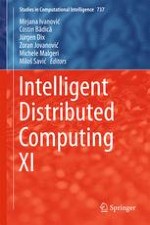This book presents a collection of contributions addressing recent advances and research in synergistic combinations of topics in the joint fields of intelligent computing and distributed computing. It focuses on the following specific topics: distributed data mining and machine learning, reasoning and decision-making in distributed environments, distributed evolutionary algorithms, trust and reputation models for distributed systems, scheduling and resource allocation in distributed systems, intelligent multi-agent systems, advanced agent-based and service-based architectures, and Smart Cloud and Internet of Things (IoT) environments.
The book represents the combined peer-reviewed proceedings of the 11th International Symposium on Intelligent Distributed Computing (IDC 2017) and the 7th International Workshop on Applications of Software Agents (WASA 2017), both of which were held in Belgrade, Serbia from October 11 to 13, 2017.
